In the simplest sense, pastry is a sweet or savoury dough or batter made from flour and fat (butter) that is shaped and baked.
It can come in many different guises – savoury pies, tarts, flan cases and sweet cakes are all examples of pastries.
Shortcrust Pastry
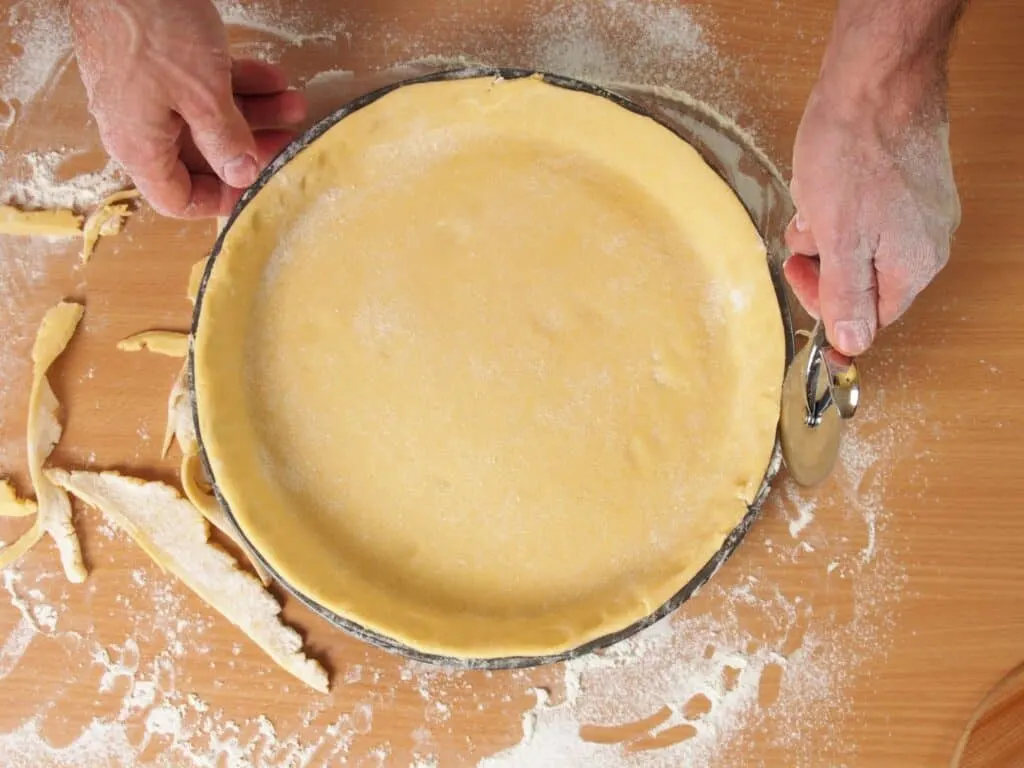
Shortcrust pastry is the most common type of pastry used in baking. Shortcrust pastry is made with flour and fat (butter), which is then combined with milk to make a dough that needs to be chilled before using.
For sweet dishes, such as apple pie, shortcrust pastry usually adds a little sugar.
Shortcrust pastry is rolled out thinly for sweet fillings such as fruit or jam and rolled out thicker to make a richer, savoury pastry case for pies. Shortcrust is easy to roll and work with.
Shortcrust pastry can be used with many recipes, including; quiche, mince pies, cherry pie, pumpkin pie and pasties.
Puff Pastry
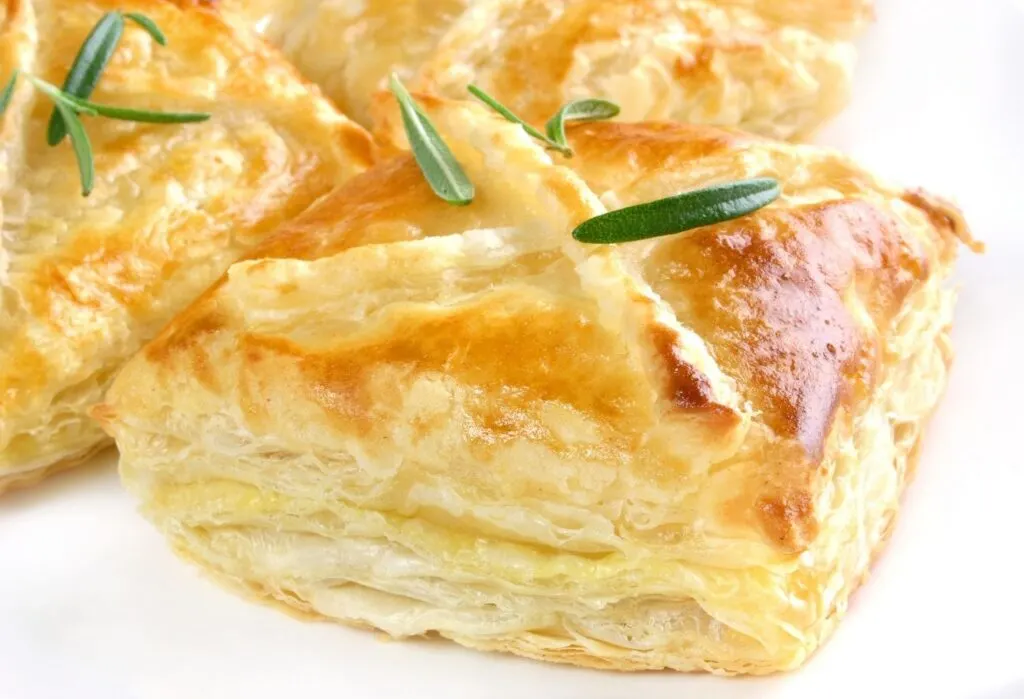
Puff pastry is a variation on shortcrust pastry but made to make the finished pastry rise during baking.
It also requires several hours to make and takes much more work. The basic ingredients are flour, butter and egg.
However, puff pastry uses laminating techniques when making it. Laminating involves folding butter into the dough several times to create the layers required for puff pastry.
Puff pastry is often filled with sweetened preserves and baked in the oven at a high temperature. Cinnamon rolls are a popular recipe to make with puff pastry.
However, other fillings can be used for savoury dishes such as sausage rolls, quiche or salmon en croute or beef wellington.
Filo Pastry
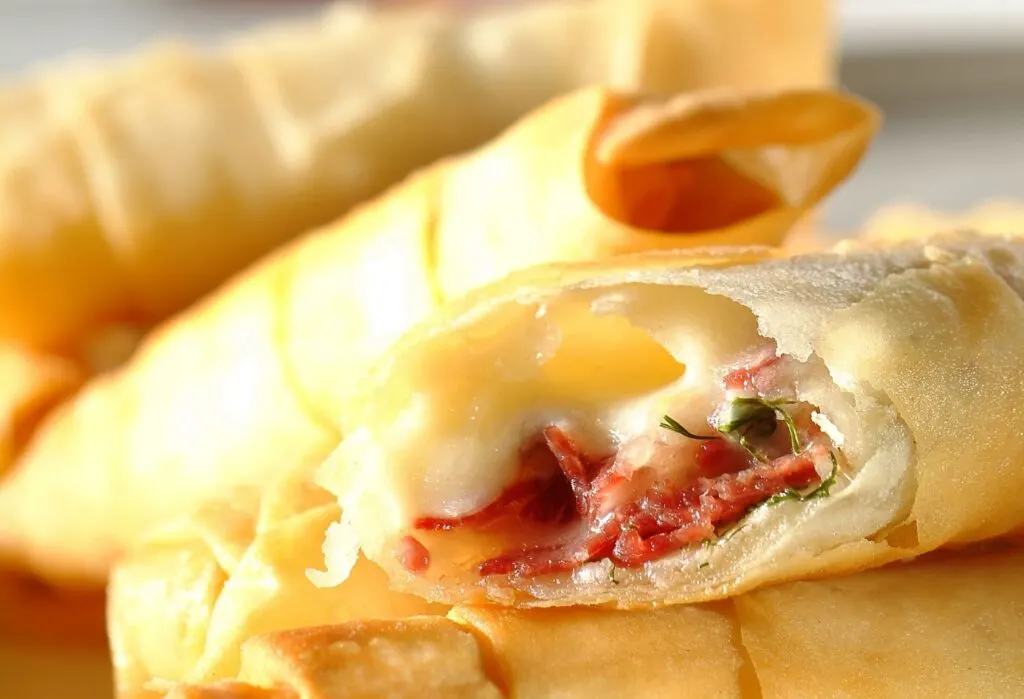
This pastry can be used to make both sweet and savoury dishes. It’s very thin and needs to be wrapped around a filling that will hold it together during baking.
Filo is often used in Greek cuisine to wrap around meat or vegetables and then baked in the oven resulting in a delicately flavoured dish.
Filo is also used for making pastries such as baklava, which uses chopped nuts combined with honey then wrapped up in filo pastry.
Additionally, filo pastry is used for making spring rolls and samosas.
Choux Pastry

Choux pastry is used to make items such as eclairs, profiteroles and cream puffs.
It’s also used for churros, a Spanish delicacy and traditionally deep-fried in oil or fat until they puff up, after that they are sprinkled with sugar.
This pastry is made from making a paste from butter, eggs and flour. It is then formed into a ball before being piped into little balls or tubes. It’s then baked in the oven until golden brown.
Flaky Pastry
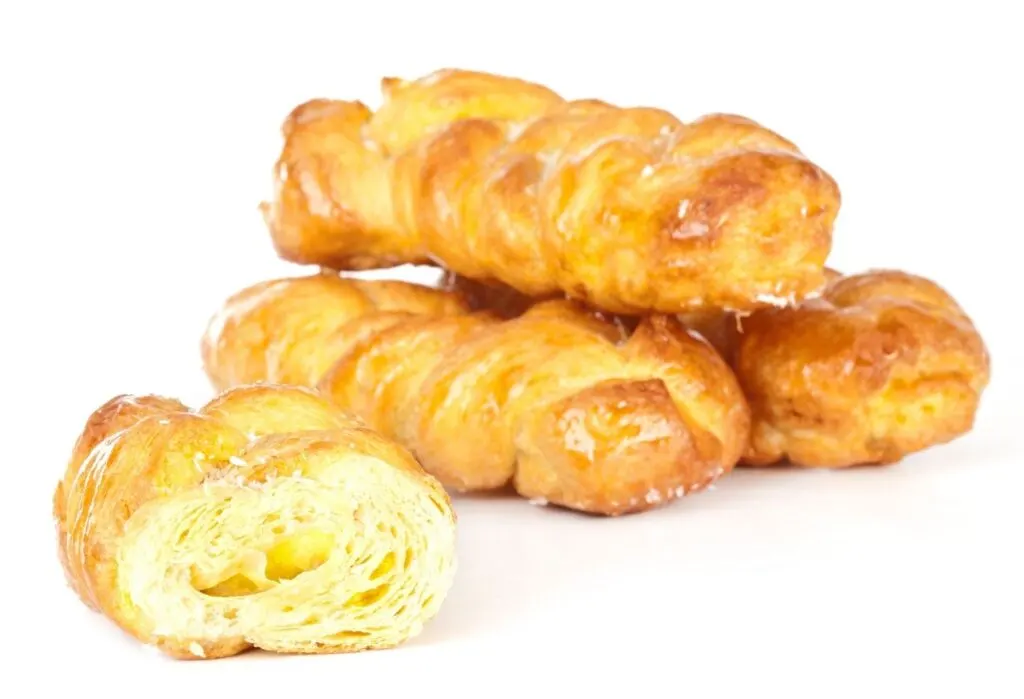
Flaky pastry is a variation on puff pastry; however, its production has two key differences. The first difference is that it has less fat than puff pastry and requires less layering (laminating).
Flaky pastry is quicker to make, requiring less folding and rolling.
Flaky pastry is typically used for recipes such as sausage rolls, pasties and sweet treats like apple turnovers.
Tips For Making Pastry At Home
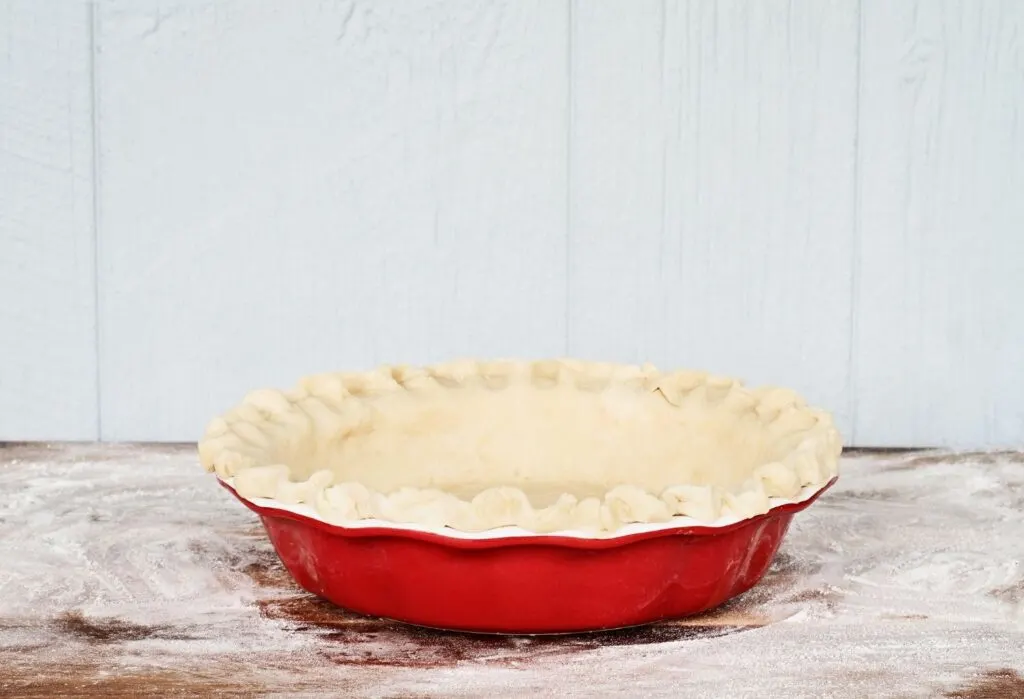
Making pastry at home can seem like a daunting task. But it doesn’t need to be difficult – especially if you follow these simple tips:
Ingredients: Ensure you have the appropriate ingredients to create your pastry; for example, you’ll need flour and butter (not margarine) if it’s shortcrust.
Where possible, use the highest quality ingredients that you can to produce the best results.
Equipment: make sure that you’ve got a rolling pin and some baking paper. If you’re using filo, then fluted tubes or a quiche mould will be needed. You may also want to get an egg wash to brush over your pastries before they go into the oven.
Preparation: Make sure you have the whole process planned out. This is especially important if you are new to making pastry and want it to come out perfect afterwards. If possible, weigh your ingredients beforehand so that there will be no mistakes made when creating them.
Temperature: When making pastry, ensure that all of your ingredients are at room temperature as this will make mixing them much easier and result in a better-finished product.
However, if it is a hot day, don’t leave the butter out for too long as butter that goes too soft will cause the pastry to become too greasy.
It’s also important for your hands not to be too warm – if you are going to struggle to keep your hands cool enough, you might need to use a food processor to produce the pastry crumbs.
The less you handle pastry, the better!
Baking: To get a crispy base for any pastries baked in the oven, ensure that you line your tins properly with baking paper and then lightly dust it with flour before adding the pastry.
And if you don’t have the time or inclination to make your pastry from scratch? Buy some from the chilled section of the supermarket!
